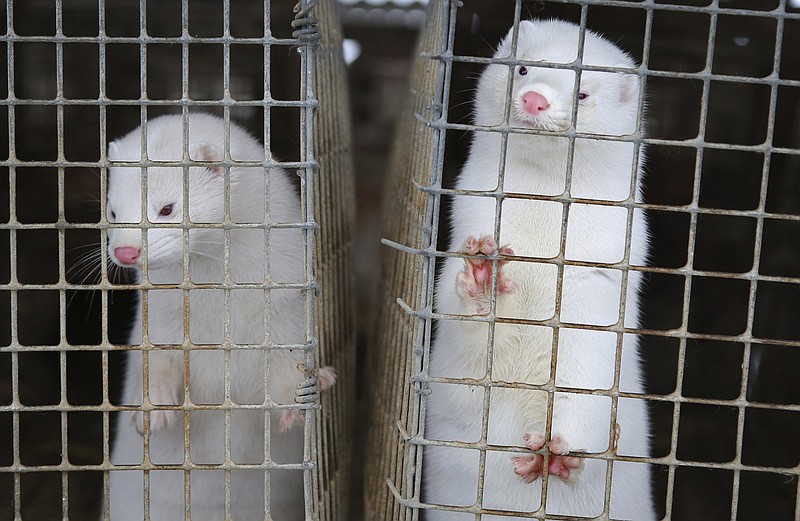MADRID -- Coronavirus outbreaks at mink farms in Spain and the Netherlands have scientists digging into how the animals got infected and if they can spread it to people.
In the meantime, authorities have killed more than 1 million minks at breeding farms in both countries as a precaution.
The virus that first infected people in China late last year came from an animal source, probably bats, and later spread from person to person, as other coronaviruses had done in the past. Some animals, including cats, tigers and dogs, have picked up the new coronavirus from people, but there hasn't been a documented case of animals spreading it back to humans.
The outbreaks among the minks on farms in the Netherlands and Spain probably started with infected workers, although officials aren't certain. But it also is "plausible" that some workers later caught the virus back from the minks, the Dutch government and a researcher said, and scientists are exploring whether that was the case and how much of a threat such a spread might be.
The outbreak at the Spanish mink farm near La Puebla de Valverde, a village of 500 people, was discovered after seven of the 14 employees, including the owner, tested positive in late May, said Joaquín Olona, regional chief of agriculture and environment. Two other employees got infected even after the operation was shut down.
More than 92,000 minks were ordered killed at the farm in the Aragon region of northeastern Spain, with nine out of 10 animals estimated to have contracted the virus.
After the Dutch outbreaks began in April, professor Wim van der Poel, a veterinarian who studies viruses at Wageningen University and Research, determined that the virus strain in the animals was similar to the one circulating among humans.
"We assumed it was possible that it would be transmitted back to people again," he said, and that's what appeared to have happened with at least two of the infected workers.
[CORONAVIRUS: Click here for our complete coverage » arkansasonline.com/coronavirus]
Richard Ostfeld, a researcher at the Cary Institute of Ecosystem Studies in Millbrook, N.Y., said that if confirmed, these would be the first known instances of animal-to-human transmission.
"With the evidence for farmed mink-to-human transmission, we definitely need to be concerned with the potential for domesticated animals that are infected to pass on their infection to us," Ostfeld said by email.
The U.S. Centers for Disease Control and Prevention says some coronaviruses that infect animals can be spread to humans and then spread between people, but it adds that this is rare.
Both the World Health Organization and the Paris-based World Organisation for Animal Health are studying the transmission of the virus between animals and people. Several universities and research institutes also are examining the issue.
Information for this article was contributed by Maria Cheng and Ken Moritsugu of The Associated Press.


